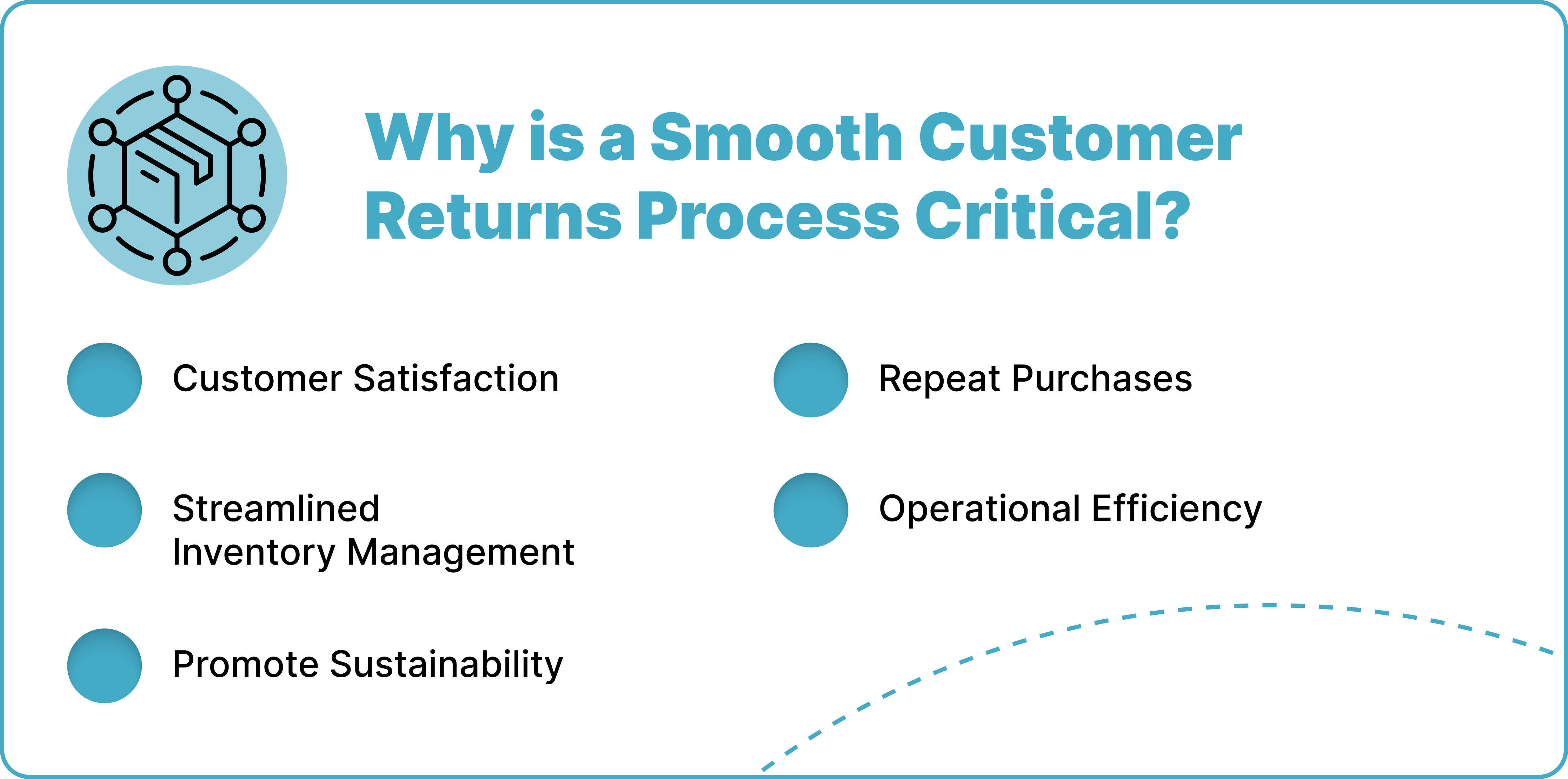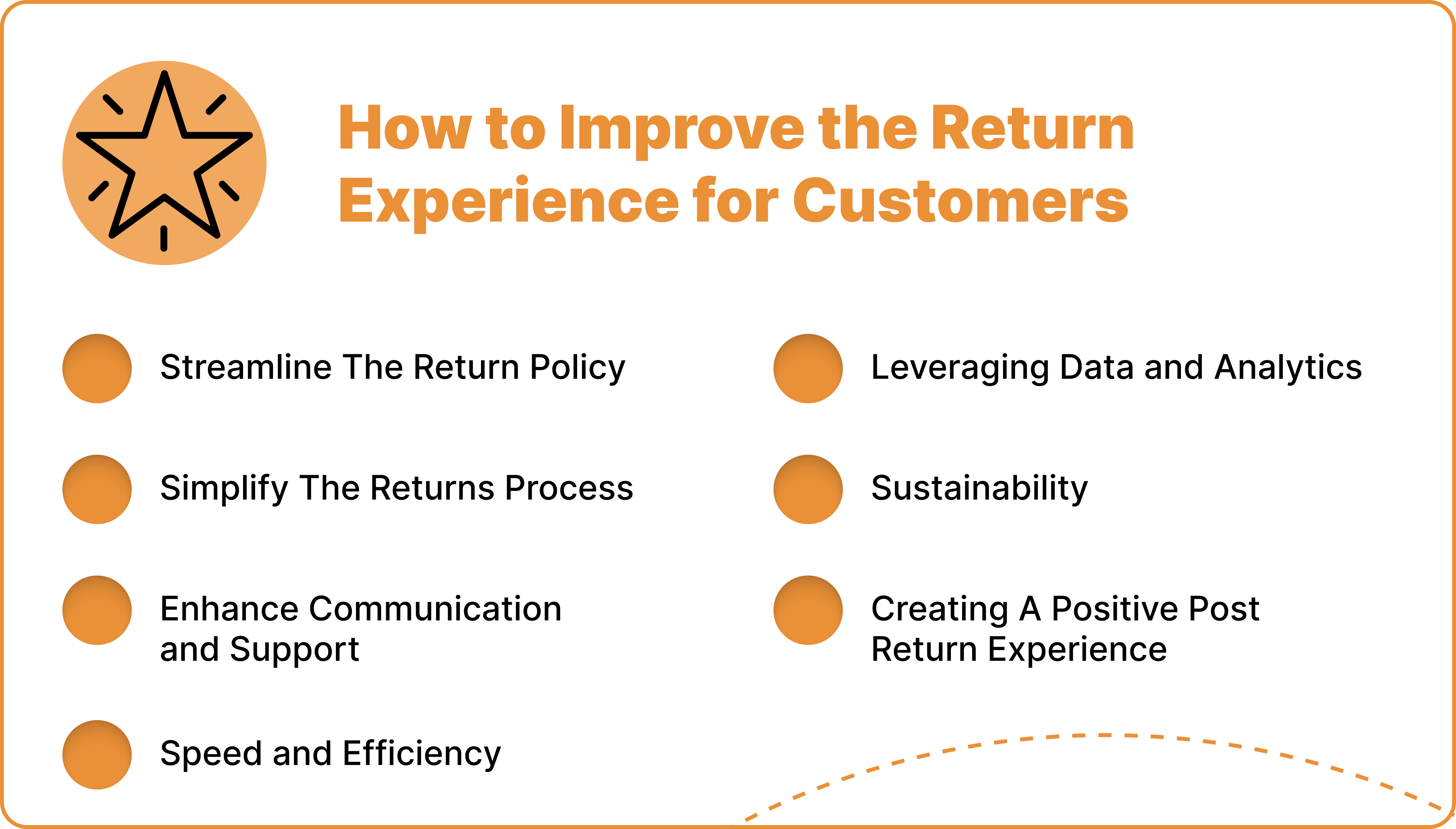Improving The Customer Return Experience To Build Customer Loyalty

For e-commerce platforms and retailers, it’s no longer a question of whether customers will return goods but when. This is why establishing a robust returns management process is not just a priority but a necessity for managing customer expectations when returning goods. It’s a key element that can significantly impact customer satisfaction and build long-term loyalty. However, beyond establishing a returns process, these businesses must curate the customer’s return experience to improve loyalty.
This article will delve into the necessity of enhancing the return experience and, specifically, how supply chains can play a pivotal role in achieving this for optimized outcomes.
Why is a Smooth Customer Returns Process Critical?

While a reverse logistics process allows goods to be reintegrated into the supply chain, the returns management process truly addresses the needs of both the business and its customers. A smooth process is desired by both parties, with the business taking the responsibility to establish it.
Here are five reasons why both parties want a smooth return process
1. Customer Satisfaction
Although their demands can sometimes be quite a stretch for businesses and supply chains, customers remain the focal point of any business or supply chain, and they want to be satisfied. Their satisfaction is paramount for the success of the business. A seamless returns process demonstrates to customers that the business is committed to going the extra mile to ensure their perfect experience.
2. Streamlined Inventory Management
A smooth returns process allows the business and its supply chain to allocate and manage the returned goods effectively. This means they can reintegrate them into the inventory management system when necessary, set them aside for refurbishment or repairs, and dispose of them carefully and sustainably if required.
3. Promote Sustainability
Customers care more about sustainability today than at any point in history. Having a smooth returns process is naturally sustainable because it reduces the amount of goods disposed of as waste. The business and supply chain can report sustainability feats, and customers will be happy to patronize them.
4. Repeat Purchases
Customers want to spend their money where they feel comfortable, and a streamlined returns process tells them their money is in good hands. It is especially important when they decide against the purchase, or a mistake is made on the part of the business. Seamless returns of goods promote their ability to make repeat purchases.
5. Operational Efficiency
A streamlined returns process will naturally reduce the time and resources required to manage the process. This way, there are better cost savings, fewer mistakes, and better allocation of resources within the business. A streamlined process also provides the supply chain with data on the why and state of the return. By reviewing the data, the business can optimize the process to reduce the rate of returns.
How To Improve The Return Experience for Customers

The reverse logistics market is rapidly rising, and it is because of e-commerce platforms and other retail businesses that wish to optimize their supply chain operations and attract more customers. However, despite the growth of reverse logistics, the return management experience detects the success of the process.
Curating a return experience that customers will love and feel comfortable with will entail the following strategies:
1. Streamline The Return Policy
Optimizing or improving the customer experience begins with a consumer-friendly return policy. That means the return policy must be easy to understand, provide several options for returning the items, be easy to find, and be transparent. The returns policy must entail the following information: time frame for returns, acceptable reasons for returns, conditions for returns, refund process, and cash-back policies. Note that cashback may also entail store credit for the purchase of another item.
2. Simplify The Returns Process
If the return process is too hard, the business and its supply chain have minimal engagement and will inevitably lose customers. It must be simple and easy to navigate. You may use a customized returns portal to facilitate or automate the returns process. It is important to offer multiple returns options and clearly highlight each option’s limitations. It could be pick-up, in-store, mail, or drop-off points.
3. Enhance Communication and Support
Customers want to know every step of the returns process, and in many cases, they will have questions, especially when the process is not going the way they initially thought it would. Businesses must showcase every step of the return process to these customers and make available trained support (human or machine) and a customer service team to be able to handle all inquiries seamlessly. Effective communication also breeds transparency and reduces the need for inquiries on the customer’s part.
4. Speed and Efficiency
The handling of returned items must be done speedily and in an efficient manner. Speed because the business cannot afford a scenario where the customers are forced to wait too long before it can decide on the returned goods and then take the necessary actions. Efficiency is important because although speed is critical, the business must not get overwhelmed. It has to be fast and make effective decisions in handling the customer’s returns. The faster the business is, the more returns it can handle.
5. Leveraging Data and Analytics
Data and analytics will help the supply chain identify the reasons for the returns and will find solutions to the problem. Although returns are inevitable, businesses and supply chains can take steps to avoid them completely. For instance, the returns could be caused by mistakes on the customer’s part. Mistakes in choosing the color, size, or variation of the item. The business, understanding this, may invest in better descriptions to help avoid those. It is through data and analytics that such mistakes can be identified.
6. Sustainability
In the modern economic and supply chain landscape, there is no optimizing the reverse logistics and return management process without making provision for the customers. Customers want sustainability, and if the entire returns process doesn’t incorporate that and strategically informs them about it, they will be less likely to continue patronizing the business or its supply chain management. Sustainability practices may include refurbishment, repairs, resale, and environmentally friendly disposals.
7. Creating A Positive Post Return Experience
Positive experiences go a long way. Having one, especially when the reason for the return is that of the ecommerce business or its supply chain, will go a long way in appeasing the customers and engendering loyalty. Doing this may entail offering discounts or incentives on future purchases. More importantly, it is important to ensure that the same mistake doesn’t happen right on the back of one. It does a lot to discredit the business. A customer service representative may also follow up with the customer to ensure the service matches expectations.
How ReverseLogix Can Help Improve Customer Return Experience
A positive customer-centric returns experience is one of the biggest factors in whether or not customers purchase from a brand again. ReverseLogix enables you to provide a totally branded and delightfully easy returns process that drives customer loyalty and provides a positive experience from start to finish. Discover how we’re raising the bar on returns. Get a demo today.
Frequently Asked Questions
Effective communication is critical and non-negotiable if the supply chain is aiming to improve the customer return process because it keeps customers informed about the status of their return, provides clear instructions, and offers responsive support from customer service teams, which can improve their overall experience and satisfaction.
Returns and refunds should be processed as quickly as possible, ideally within a few days of receiving the returned item. Prompt processing can encourage customers to continue patronizing the business and it helps maintain customer trust and satisfaction.
To reduce the rate of returns, businesses, and supply chains can leverage data analytics to find out the reasons behind these returns and then take the necessary steps to eliminate them. These steps may include ensuring accurate product descriptions, high-quality images, comprehensive size guides, and leveraging customer feedback to improve product quality.
Businesses can address concerns by offering free return shipping, providing clear information about any return shipping costs upfront, or offering alternatives such as in-store returns to minimize customer expenses. All of this also enhances customer satisfaction.
